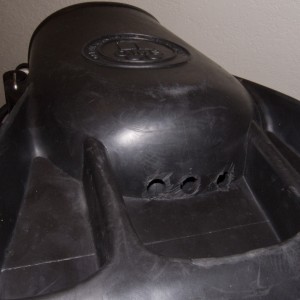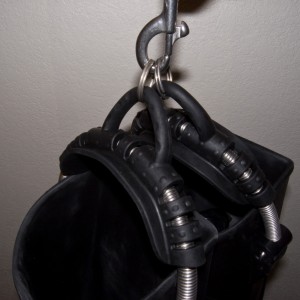On Saturday I headed out on the Sea Bass to dive some oil rigs just off the coast of LA. The first dive was on the Elly oil rig. Visibility was a solid 50 feet until the end of the dive near the water pipes. There were lots and lots of playful sea lions of all sizes. A few came down to visit us on the super structure at about 80 feet, blowing bubbles and barking. After that they left us alone for while and we explored the mass of life growing on the supports. At 30 feet a large group came to visit us, and playfully looped around us while blowing bubbles.
The next dive was on the Ellen oil rig. The visibility had dropped to about 25 feet and it was fairly dark under the structure, but it was still fun to explore the structure. The currents had really picked up when we were doing our safety stop – a steady swim was needed to keep place. There weren’t as many sea lions on this dive, but it was probably that they were bored with us finally. There was a third dive scheduled on the Eureka rig, but my ear was giving me trouble so I had to bail out.
It was a gorgeous sunny day with barely a ripple on the water. The boat staff and the other divers (especially my insta-buddies Heather and Harry) were friendly and knew what they were doing. Waking up at 4 in the morning to drive to LA isn’t my favorite activity, but the reward was well worth it.
Heather posted a video that gives a pretty good idea of what it is like to be in the middle of a sea lion play time – a lot of fun. I’m in the video a couple times, rolling on my side and making strange chicken wing movements. As much as I love the chicken dance, I’m actually trying to vent some stubborn air from my drysuit. Enjoy:




